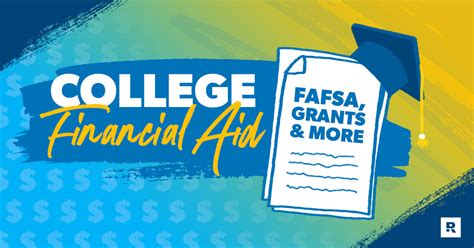Navigating the complexities of financial aid can be daunting, but it’s crucial for students to understand their options and secure the necessary funding to pursue their educational goals. For prospective students considering Cleveland State University (CSU), this article provides a comprehensive overview of the financial aid landscape.

Types of Financial Aid
Cleveland State University offers a variety of financial aid options to support students with different financial needs. These include:
- Grants: Free money that does not need to be repaid. CSU offers Federal Pell Grants, Federal Supplemental Educational Opportunity Grants (FSEOG), and Ohio College Opportunity Grants (OCOG).
- Scholarships: Merit-based awards that are typically awarded based on academic performance, leadership, or other criteria. CSU offers a range of scholarships, including University-wide scholarships, College-specific scholarships, and External scholarships.
- Work-Study: Part-time employment opportunities provided through CSU that allow students to earn money to help pay for college expenses.
- Loans: Borrowed funds that must be repaid with interest. CSU offers Federal Direct Loans (subsidized and unsubsidized), Federal Parent PLUS Loans, and Graduate PLUS Loans.
Eligibility and Application Process
To be eligible for financial aid at CSU, students must:
- Be enrolled as an undergraduate or graduate student in a degree-granting program.
- Demonstrate financial need (except for merit-based scholarships).
- Maintain satisfactory academic progress.
- Be a U.S. citizen or eligible non-citizen.
- Not have defaulted on any federal student loans.
Students can apply for financial aid by completing the Free Application for Federal Student Aid (FAFSA). This application calculates the Expected Family Contribution (EFC), which determines the amount of financial aid a student is eligible for.
Deadlines and Important Dates
The FAFSA should be submitted by students as soon as possible, but no later than the following deadlines:
- May 1: Priority deadline for entering undergraduate freshman students.
- June 15: Regular deadline for undergraduate students.
- February 1: Priority deadline for continuing undergraduate and graduate students.
- April 15: Regular deadline for continuing undergraduate and graduate students.
Cost of Attendance and Financial Aid Awards
The cost of attendance (COA) at CSU includes tuition and fees, books and supplies, living expenses, and other related costs. For the 2022-2023 academic year, the estimated COA is:
- In-state undergraduate students: $23,051
- Out-of-state undergraduate students: $35,456
- Graduate students: $24,282
Financial aid awards typically cover a portion of the COA, and students may need tosupplement their awards with additional funding through scholarships, savings, or part-time work.
Common Mistakes to Avoid
When applying for financial aid at CSU, students should avoid the following common mistakes:
- Not completing the FAFSA: The FAFSA is essential for determining financial aid eligibility.
- Missing deadlines: Submitting the FAFSA by the deadlines ensures timely processing of financial aid applications.
- Not exploring all scholarship options: CSU offers a wide range of scholarships, and students should research and apply for all scholarships that they qualify for.
- Borrowing too much: Students should only borrow what they need to cover their educational expenses.
- Not staying on track with academic progress: Maintaining satisfactory academic progress is critical to maintaining financial aid eligibility.
Conclusion
Financial aid is an important resource for students attending CSU. By understanding the types of financial aid available, eligibility requirements, and deadlines, students can maximize their financial support and pursue their educational goals without the burden of excessive debt.
